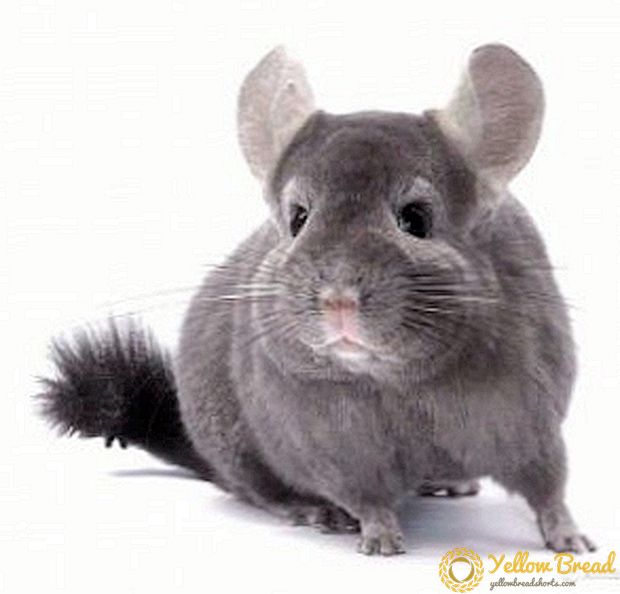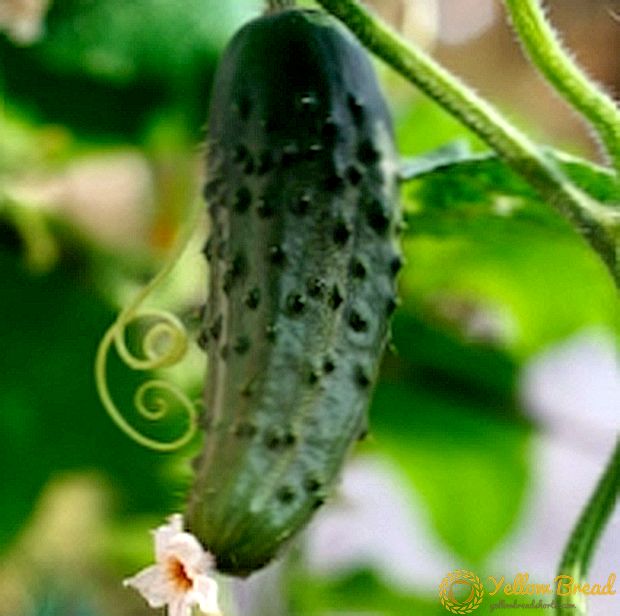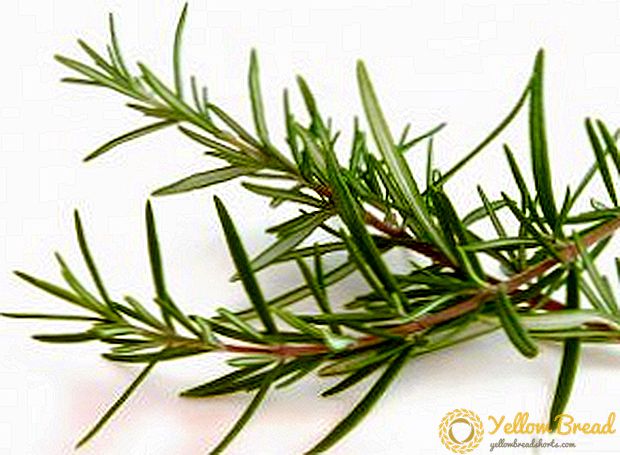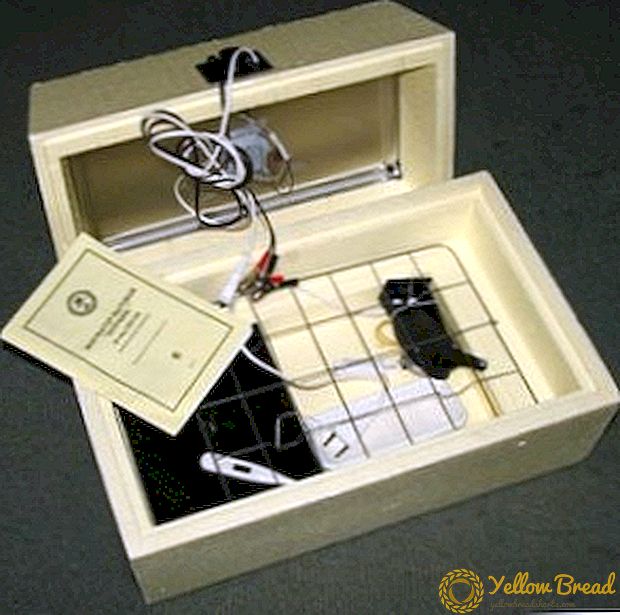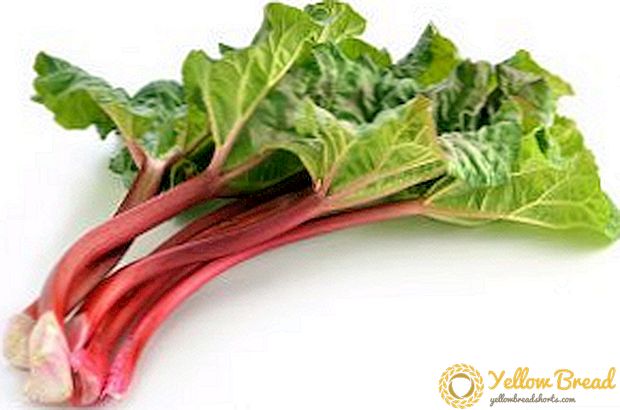 Rhubarb is a perennial herb belonging to the buckwheat family, with a strong rhizome and large leaves, located on thick and long petioles. Petioles grow up to 80 cm in length and up to 4 cm thick, their weight can reach up to 1 kg. In this article we will talk about the rules of growing and harvesting rhubarb.
Rhubarb is a perennial herb belonging to the buckwheat family, with a strong rhizome and large leaves, located on thick and long petioles. Petioles grow up to 80 cm in length and up to 4 cm thick, their weight can reach up to 1 kg. In this article we will talk about the rules of growing and harvesting rhubarb.
- The best varieties of edible stalks
- Climatic conditions for rhubarb
- How to plant rhubarb
- Growing from seed
- Vegetative method
- Care for rhubarb - dressing, watering, weeding and transplanting
- Harvest rules
The best varieties of edible stalks
Growing rhubarb on the site is not limited to only one variety of this plant. When choosing a variety, it is necessary to pay attention to the maturation and coloring terms. The petioles of green color are used for making mashed potatoes, cabbage soup, and red - when boiling jelly and compote.
- "Victoria" - an early ripe and fruitful grade.The length of the petioles is a little more than 60 cm. The disadvantage of this variety is abundant flowering. The advantage is the excellent taste qualities of this rhubarb variety, which makes its use universal.

- "Zaryanka" - early-ripening variety (the first harvest in 30 days from spring regrowth). The length of the petioles is from 30 to 44 cm. This variety of rhubarb has an average winnowing ability.
- "Obskaya" - medium-early variety (harvesting in 60-69 days after germination). Petiole length 22-23 cm. This variety is cold-resistant, but does not tolerate drought.
- "Stubborn" - early ripe variety (harvesting in 41-44 days from spring regrowth). Petiole length 49-55 cm. This variety is not prone to abundant flowering.
Climatic conditions for rhubarb
The rhubarb plant is unpretentious, well tolerating different climatic conditions (cold, drought), can grow in the shade, has resistance to pests and diseases.
 Rhubarb has a strong and branched root system (which penetrates deep into the soil up to 2.5 m). In winter, rhubarb is best covered with compost or rotted manure. The root system of rhubarb has a large supply of nutrients to ensure the rapid growth of leaves after the snow melts.
Rhubarb has a strong and branched root system (which penetrates deep into the soil up to 2.5 m). In winter, rhubarb is best covered with compost or rotted manure. The root system of rhubarb has a large supply of nutrients to ensure the rapid growth of leaves after the snow melts.How to plant rhubarb
Planting rhubarb on the plot can be done using two methods: vegetative (transplanting and dividing rhubarb bushes in spring) and seeds (through seedlings).
Growing from seed
 Many novice agronomists are wondering, "How to plant rhubarb from seeds?". First you need to soak the seeds in water before swelling, then germinate them under wet gauze or burlap. When white sprouts (1–2 mm long) spill from the seeds, the seeds must be dried to flowability and then sown.
Many novice agronomists are wondering, "How to plant rhubarb from seeds?". First you need to soak the seeds in water before swelling, then germinate them under wet gauze or burlap. When white sprouts (1–2 mm long) spill from the seeds, the seeds must be dried to flowability and then sown.
Sowing should be done at the end of April - beginning of May in a row manner. (distance between rows 25 cm). Seeds are planted at a depth of 2-3 cm. When 1-2 leaves grow on shoots, they are thinned out (rhubarb must be left in rows at a distance of 20 cm). In the future, grown seedlings of rhubarb are weeded, loosened, fed with fertilizers and watered.
By autumn, seedlings grow to 20-30 cm and have 3-4 well-developed leaflets. Overwintered seedlings of rhubarb, in early spring need to dig for planting. Roots or segments of rhizomes with buds (just started to grow) are planted in the wells with a shovel (at a distance of 100 by 80 cm or 100 by 100 cm). When late planting, the leaves of the plant (highly developed) must be removed. During planting, rhubarb root is pressed tightly with soil, and the kidney is covered with earth no more than 1-2 cm (if the earth is not sufficiently wet, it is watered when planted). 
Vegetative method
Sometimes, beginning agronomists ask another question, "How to grow a plant in a vegetative way?". With this method of reproduction, rhubarb bushes are dug out in early spring. Their root system is divided by a knife into parts (each part should have 1 to 2 growth buds with a root). From one root system, 5-10 planting roots are obtained. Split root systems should be planted immediately.
Care for rhubarb - dressing, watering, weeding and transplanting
Care for rhubarb provides for weeding, watering, loosening between rows and removing flower arrows, as well as feeding and transplanting. Once a season, rhubarb should be fertilized (with mineral and organic compounds).When flower stalks appear on rhubarb, they also need to be removed (flower stalks draw all useful and nutrients from the plant). In autumn, all rhubarb plants with weak thin and short petioles should be removed, and in healthy ones, almost the entire vegetative part should be cut.
Replanting rhubarb is quite difficult, due to the highly developed root system and large size of the bush. It is preferable to do this in early spring, until the above-ground part has grown. But it is better, nevertheless, to propagate the root system of rhubarb in a vegetative way.
Harvest rules
 Harvesting rhubarb must be started in the second year (if the planting was done vegetatively) or in the third year (if planting was done through seeds). When the roots reach a length of 25-30 cm, they can be cut (for the first time - 3-4 sheets). Every 10-12 days you can cut more leaves (but there should be 3-4 leaves on the plant after cutting). In most cases, rhubarb is cut 3-4 times.
Harvesting rhubarb must be started in the second year (if the planting was done vegetatively) or in the third year (if planting was done through seeds). When the roots reach a length of 25-30 cm, they can be cut (for the first time - 3-4 sheets). Every 10-12 days you can cut more leaves (but there should be 3-4 leaves on the plant after cutting). In most cases, rhubarb is cut 3-4 times.

